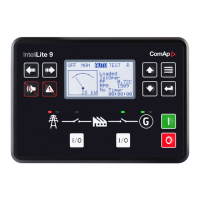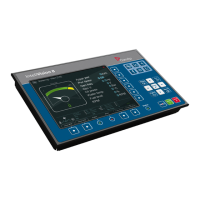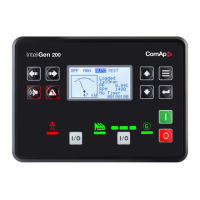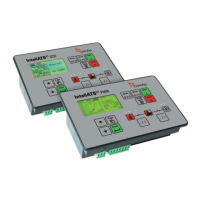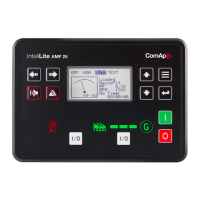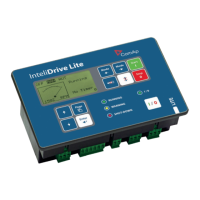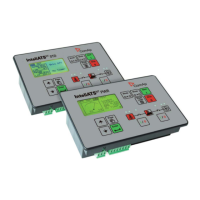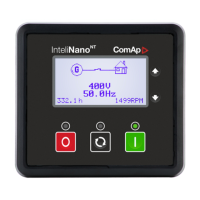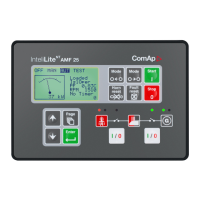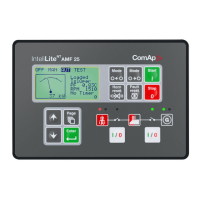InteliMains 210 Global Guide
96
The two groups which are connected together by the BTB, are defined with parameters Group Link L (page
201) and Group Link R (page 202).
Controller sends via CAN2 bus information that controllers from groups Group Link L and Group Link R are
linked together, if the Group link function (signal associated with the function) is active. It sends information
that the groups are separated, if the Group link function is not active.
Note: The "group link" function is independent on the group, where the controller itself belongs to. The controller
can provide "group link" information about any two groups and it may not belong to one of the groups.
All gensets/controllers in linked groups cooperate with each other and perform load sharing, VAr sharing and
power management together. These functionalities are performed independently in each group, when the
groups are separated.
Example:
4 gen-sets separated by a BTB breaker into two groups of 2. The BTB position is detected by the controllers 2
and 3. The reason, why there are 2 controllers used for detection of the BTB position, is to have a backup source
of the group link information, if the primary source (controller) is switched off.
Image 5.28 Example of control groups
Once the BTB breaker is closed, the control groups 2 and 3 become new group 2+3. Power management, load
sharing and VAr sharing are performed within newly established group 2+3. Merging of the groups may result
with a genset stopping, if power management evaluates that available Actual Reserve is high enough to stop a
genset.
5.4.5 Distributed power management signals
Sharing of multiple Logical Binary Input (LBI) functions is critical for power management system operation,
because several power management functionalities require simultaneous activation of LBI functions in
controllers, which are involved in power management operation. It can be done either automatically using CAN2
bus link between controllers or using dedicated LBI functions.

